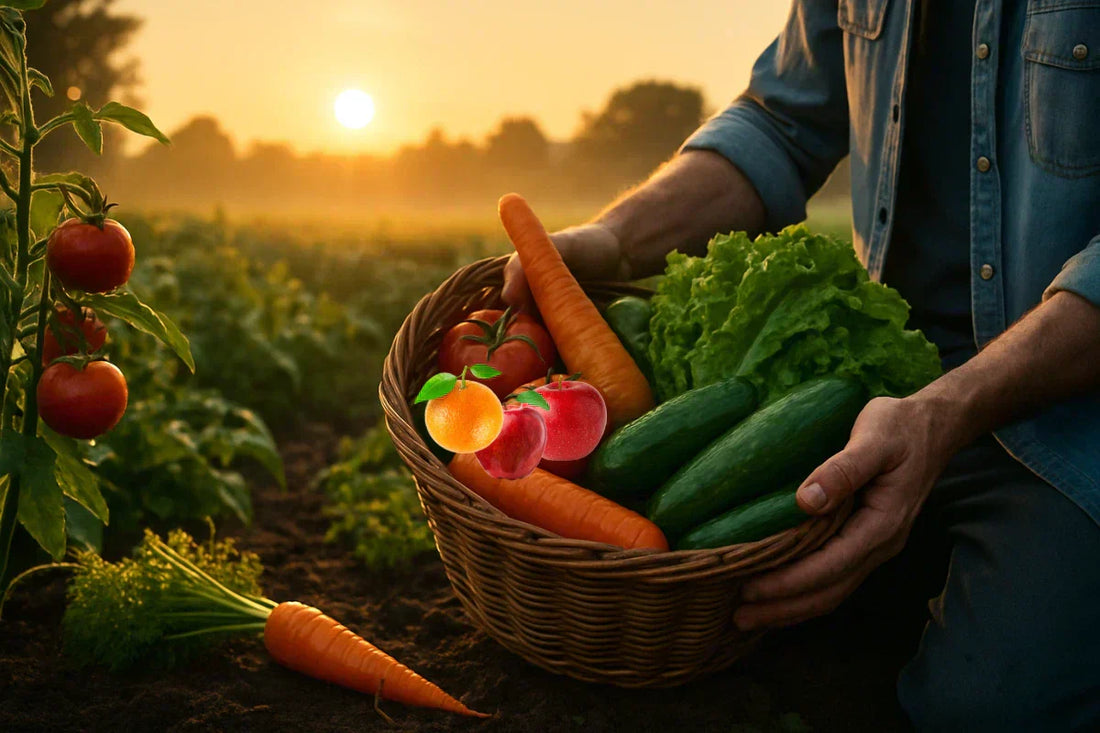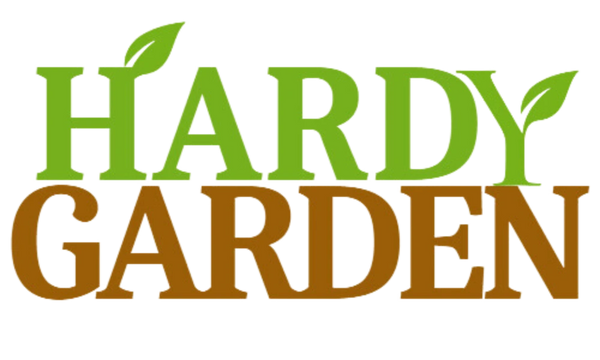
How to Harvest Fruits and Vegetables
Harvesting your homegrown fruits and vegetables at the right time is crucial for achieving the best flavor and nutritional value. Many gardeners, especially beginners, often make the mistake of picking their crops too early or too late, missing the optimal window for flavor and nutrients. The timing of your harvest directly influences taste, texture, and even the shelf life of your produce.
In this guide, we'll walk you through the best practices for harvesting various fruits and vegetables to maximize their flavor and nutrient content.
The Importance of Harvesting at the Right Time
- Better Flavor & Nutrition: Crops taste best and deliver peak nutrients when harvested at the right stage of ripeness.
- Longer Shelf Life: Timely harvests prevent overripening and help your produce stay fresh longer.
- Encourages More Growth: Picking regularly stimulates plants to produce more fruits and veggies.
- Prevents Pests & Diseases: Leaving produce too long can attract pests and increase the risk of rot or disease.
- More Enjoyable Gardening: A well-timed harvest is less stressful and far more satisfying—it's the reward of your hard work!

General Harvesting Guidelines
-
Harvest in the Morning
Pick fruits and vegetables early when temperatures are cooler to preserve moisture, flavor, and nutrients. -
Use Clean, Sharp Tools
Always use sanitized pruners, scissors, or knives to make clean cuts and avoid damaging plants. -
Handle with Care
Gently handle produce to prevent bruising, especially for soft fruits like tomatoes or berries. -
Pick When Ripe—Not Overripe
Learn the signs of ripeness for each crop (color, size, firmness, aroma) and harvest promptly to avoid spoilage or pest damage. -
Harvest Regularly
Frequent picking encourages continuous production, especially in crops like beans, cucumbers, and zucchini. -
Don’t Pull or Yank
Twisting or yanking can damage the plant. Use tools or a gentle snap to remove fruits. -
Sort Immediately
Separate damaged or overripe produce from fresh ones to avoid cross-contamination or early spoilage. -
Keep Harvest Cool
Place harvested produce in shade or indoors quickly to avoid heat exposure and wilting. -
Use Proper Containers
Use shallow baskets or mesh bags to allow airflow and avoid piling, which can cause bruising. -
Harvest Dry
Avoid harvesting wet plants (from dew or rain) to reduce the spread of diseases.

Harvest Timing by Vegetable Type
Every type of vegetable has its ideal harvest timing, which varies based on maturity and the growing season.
Leafy Greens (Lettuce, Spinach, Kale)
- Cut-and-Come-Again Tips: For greens like lettuce and kale, you can harvest outer leaves while allowing the plant to continue producing new growth.
- Avoiding Bitterness: Harvesting before the plant bolts (flowers) helps maintain tenderness and sweetness. Leafy greens that are harvested too late may become bitter.
- Staggered Harvesting: To extend the harvest period, stagger plantings every two weeks so that you can continuously harvest fresh greens throughout the growing season.
Root Vegetables (Carrots, Potatoes, Beets, Radishes)
- Signs of Maturity: Root vegetables are ready when they reach their full size. Carrots should be deep orange, and beets should be rich red.
- Best Time of Day: Early morning is ideal when the soil is still moist, making it easier to pull out without damaging the roots.
- How to Harvest: Use a garden fork to gently lift the roots from the soil, avoiding pulling them directly by the stems, which can break off easily.

Fruiting Vegetables (Tomatoes, Peppers, Cucumbers)
- Color and Firmness: Look for bright color and firm texture. Tomatoes should be fully colored, and cucumbers should be firm with smooth, green skin.
- Vine Ripening: For tomatoes, some varieties may need to ripen fully on the vine for the best flavor, while others can be picked when slightly under-ripe and left to ripen indoors.
- Special Tips: Gently twist the cucumber off the vine to avoid damaging the plant. For tomatoes, cutting the stem with garden scissors can prevent damaging the fruit.
Legumes (Peas, Beans)
- Snap Test: Snap peas should be firm and snap easily, while beans should be swollen but not yet dried out in their pods.
- Eating Fresh vs. Shelling: Some beans and peas are best eaten fresh, while others are left to mature fully in their pods before being shelled.
- Seed-Saving: If you’re saving seeds, wait until beans and peas are fully dried on the vine before harvesting.

Harvest Timing by Fruit Type
Tree Fruits (Apples, Peaches, Plums)
- Natural Drop Signs: When tree fruits are ready, they may naturally drop from the tree. However, if you’re unsure, the twist test is effective for apples—gently twist and pull to see if it comes off easily.
- Ripen On or Off-Tree: Some fruits, like peaches and plums, ripen best off the tree. However, apples typically taste better when left to ripen fully on the tree.
Berries (Strawberries, Blueberries, Raspberries)
- Daily Harvesting: Berries ripen quickly, so harvest them every day during peak season to avoid overripeness and bruising.
- Avoiding Bruising: Gently pick berries to avoid crushing them. For raspberries, carefully lift the fruit from the stem, as they come off easily when ripe.
- Storage Tips: Store berries in a cool, dry place or refrigerate them. Avoid washing berries until ready to eat to preserve freshness.

Melons and Pumpkins
- Tendril Color and Ground Spot: For melons, check the tendril closest to the fruit. It should be dry and brown when the melon is ripe. Additionally, the ground spot where the melon touches the soil should be yellow or orange.
- Sound Test for Watermelons: Knock on a watermelon. A hollow sound indicates ripeness.
- Handling Large Fruits: Use a gentle touch when handling large fruits like pumpkins and melons to avoid bruising.
Tools for Easy and Safe Harvesting
- Harvesting Basket: For collecting fruits, veggies, and herbs without bruising or crushing them.
- Pruning Shears / Garden Scissors: Sharp, easy-to-handle shears make clean cuts on stems and fruits.
- Garden Gloves: Protects your hands from thorns, sap, and dirt while providing a better grip.
- Fruit Picker Tool (with Extendable Handle): Great for reaching high fruits like apples or citrus without a ladder.
- Garden Knife: Handy for slicing through tough stems or digging out root veggies like carrots or beets.
- Soft Foam-Lined Harvest Container: Keeps delicate produce like tomatoes and peaches from bruising.
- Bucket or Harvest Pouch: Worn around the waist for hands-free picking, especially for small crops like beans or berries.
- Digging Fork or Hand Trowel: Helps lift root vegetables like potatoes, onions, or garlic gently out of the soil.
- Garden Apron with Pockets: Keeps tools and gloves within reach while you harvest.
-
Mesh Storage Bags: Breathable and lightweight, perfect for storing freshly picked produce to prevent mold and spoilage especially root crops.

Storing Your Harvest to Preserve Nutrients
- Post-Harvest Freshness Tips: Handle your harvest gently, and avoid overloading your baskets, which can crush delicate produce like tomatoes or berries.
- Dos and Don’ts: Store most fruits and vegetables in a cool, dark place. Avoid storing vegetables like potatoes and onions in the fridge, as they prefer a dry, cool area.
- Freezing and Canning: Blanch vegetables before freezing to preserve their nutrients. For canning, ensure that you follow proper techniques to retain vitamins and minerals.
- How Long Fruits and Vegetables Retain Nutrients: Most fruits and vegetables are best consumed within a few days to a week of harvest. Longer storage can lead to nutrient degradation.

Conclusion
With the right timing and a few handy tools, your garden’s bounty can be fresher, tastier, and more nutritious than ever. So get out there, harvest with care, and enjoy the delicious rewards of your hard work—one ripe bite at a time!
Need the right tools to make harvest season a breeze?
Shop smart with Hardy Garden—your one-stop destination for garden-ready gear, harvest essentials, and more. Explore Now
